
Different properties of iron ore, its processing technology is naturally different. Below, we will explain to you two different types of the iron extraction processes.
According to the different types of iron-bearing species, the magnetite can be divided into single magnetite and polymetallic magnetite. In general, the low-intensity magnetic separation process is often used for the separation of single magnetite, while the combined process is often used for the separation of polymetallic magnetite.
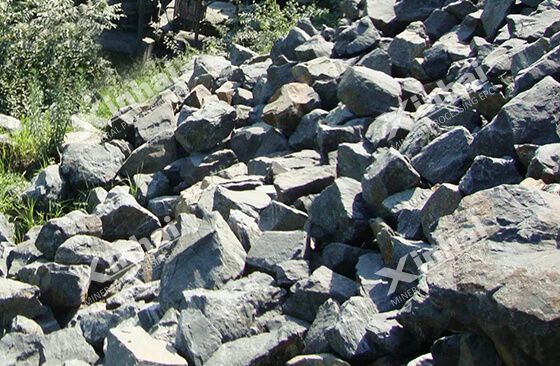
Single magnetite iron extraction process
Most of the iron minerals in the single magnetite ore are magnetite, which has simple composition, strong magnetism, easy grinding, and easy separation, so the low-intensity magnetite iron extraction process is often used for the separation of single magnetite.
◆ When the grinding size is greater than 0.2mm, most iron ore magnetic separation plants often adopt one stage grinding-magnetic separation process;
◆ When the grinding size is less than 0.2mm, two stage grinding-magnetic separation process is adopted;
◆ For the drought and water-deficient areas, the magnetite concentrator can consider using the dry grinding-dry magnetic separation process;
◆ The depleted magnetic-rich ore or lean magnetic ore can adopt the dry magnetic separation process to remove the gangue first, and then the massive rich ore can be processed by the grinding and magnetic separation process to obtain the concentrate.
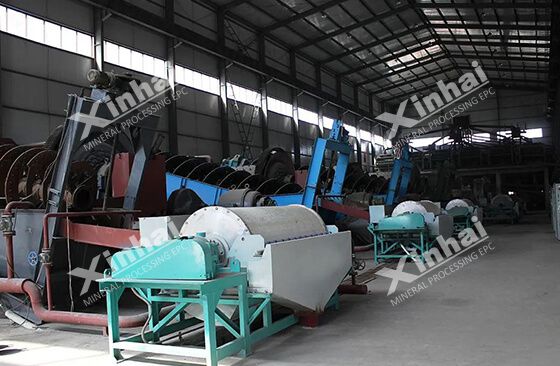
Polymetallic magnetite iron extraction process
The gangue of the polymetallic magnetite ore often contains silicate or carbonate minerals and is associated with cobalt-pyrite, chalcopyrite, and apatite. Generally, the combined process of low-intensity magnetic separation and flotation can be used to deal with the polymetallic magnetite, that is, the iron is recovered by the low-intensity magnetite iron extraction process, and then the sulfide or apatite is recovered by the flotation process.
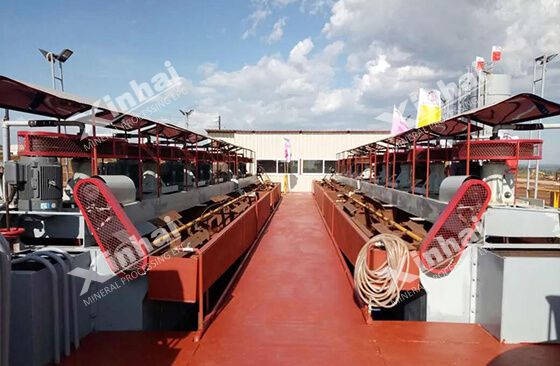
Generally, the low intensity magnetic separation-flotation process of polymetallic ore can be divided into two kinds: low intensity magnetic separation-flotation process and flotation-low intensity magnetic separation process. The difference lies in the different directions of intergrowth of magnetite and sulfide. For the low intensity magnetic separation-flotation process, the intergrowth mainly enters the iron concentrate. For the floatation-low intensity magnetic separation process, the intergrowth mainly enters the sulfide concentrate. Therefore, under the same grinding size, the flotation-low intensity magnetic separation process can obtain the iron concentrate with lower sulfide content and the sulfide concentrate with a higher recovery rate.
As a weakly magnetic iron ore, the hematite contains a small amount of magnetite, uneven dissemination size of impurity, and more fine particles. Due to its complex ore properties, gravity separation, flotation, magnetic separation, and the combined process are often used for separation.
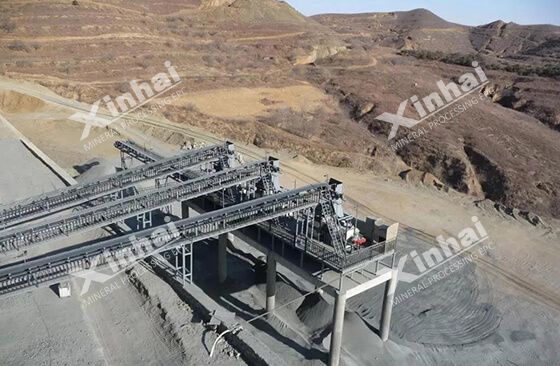
Hematite gravity separation process
The hematite gravity separation process mainly includes coarse gravity separation and fine gravity separation:
◆ Coarse gravity separation
The geological grade of the deposit is high (about 50%), but the ore body is thin, and the waste rock mixed into the ore during mining makes the ore deplete. Only crushing without grinding can be adopted for this kind of ore. The coarse tailings can be discarded by the gravity separation process under the coarser particle size, so as to restore the geological grade.
◆ Fine gravity separation
This method is mostly used to treat the hematite with fine disseminated particle size and high magnetic content. After the crushing, the grinding is carried out to separate the monomer of the mineral, and then the fine concentrate with high grade is obtained through the gravity separation process.
However, concentrate grade most weakly magnetic iron ore obtained by the high-intensity magnetic separation is not high, and the unit processing capacity of the gravity separation process is low, so the combined process of high-intensity magnetic separation and gravity separation process is often adopted, that is, a large number of unqualified tailings are discarded by the high-intensity magnetic separation process first, and then the gravity separation process is used to further treat the high-intensity magnetic concentrate for improving the concentrate grade.
Hematite flotation process
The flotation process is mainly used for the separation of fine and fine weakly magnetic hematite ore, including positive flotation process and reverse flotation process. The common flotation reagents include fatty acid (soap), oxidized paraffin soap, crude tar oil, chlorinated acid, oxidized kerosene, sodium petroleum sulfonate, corn starch, etc.
◆ Positive flotation process
Using the anionic collector to surface the iron minerals from raw ore, the tailings can be discarded under the coarse-grained conditions without desliming. This method is featured with simple reagent and low processing cost, especially suitable for the single hematite ore. However, the qualified hematite concentrate needs to be obtained after several times of cleaning, and the foam is easy to stick, so that the product is not easy to concentrate and filter.
◆ Reverse flotation process
Using the anion or cationic collector to surface the gangue minerals from the raw ore. Among them, the anion collector reverse flotation process uses the collector of fatty acid for the reverse flotation to obtain red iron concentrate. The cationic collector reverse flotation process uses the amine collectors (ether amine, fatty amine) to surface the quartz gangue.
In terms of the ore properties of hematite, the reverse flotation has more advantages than the positive flotation. Because the collecting object of the reverse flotation process is gangue, while the collecting object of the positive flotation process is iron minerals, which is difficult to obtain high-quality hematite concentrate for the minerals with serious inclusion of gangue minerals.
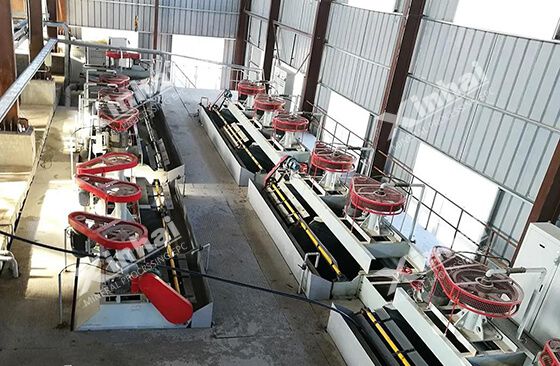
Hematite iron combined extraction process
Hematite low intensity magnetic separation-high intensity magnetic separation process
Some hematite contains a small amount of magnetite, its strong magnetic minerals are easy to cause the blockage of high magnetic field separator. Therefore, when using the high-intensity magnetic separation process, it is usually necessary to increase the low-intensity magnetic separation before the high-intensity magnetic separation, which can remove or separate the strong magnetic minerals in the ore. The tailings of low-intensity magnetic separation are sent to the concentration and scavenging of high-intensity magnetic separation after the thickening. The coarse concentrate obtained by the high-intensity magnetic separation is concentrated and cleaned by the high-intensity magnetic separator. This method is suitable for the separation of magnetic-hematite mixed ore with low grade.
Hematite high intensity magnetic separation-flotation process
Under the coarse grinding, the high-intensity magnetic separation process recovers the fine hematite minerals and discards the gangue minerals (such as quartz and chlorite) from the ore, which plays a dual role of desliming and tail-discarding, thus creating a better condition for flotation operation. This method is mainly suitable for the separation of fine hematite.
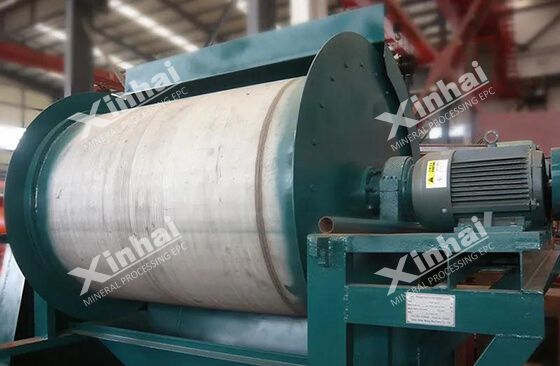
Hematite high intensity magnetic separation-gravity separation process
For most weak magnetic hematite, adopting the high intensity magnetic separation process to discard a large number of unqualified tailings, and then using the gravity separation process to further select the hematite. The concentrate grade only obtained by the high intensity magnetic separation is not high, and the unit handling capacity of minerals only by the gravity separation method is low, so the combined process of high intensity magnetic separation and gravity separation can be adopted to further improve the concentrate grade, which is suitable for the beneficiation of medium and high grade hematite ore.
Hematite roasting- magnetic separation process
This method is to magnetize the hematite for making hematite or pseudo hematite into magnetite, and then use the low magnetic field magnetic separator for separation. It is suitable for the hematite with complex mineral composition and is difficult to achieve the ideal concentrate grade by using other iron extraction methods.
In order to beneficiate the iron ore more reasonably, the iron extraction process is very important.If you want to separate the iron more economic and environmental, it is suggested to carry on the mineral processing test first, analyze the nature of the ore comprehensively, then get the scientific beneficiation test report, thus to select the reasonable iron extraction process.
To find out more about our products and solutions, please fill out the form below and one of our experts will get back to you shortly.